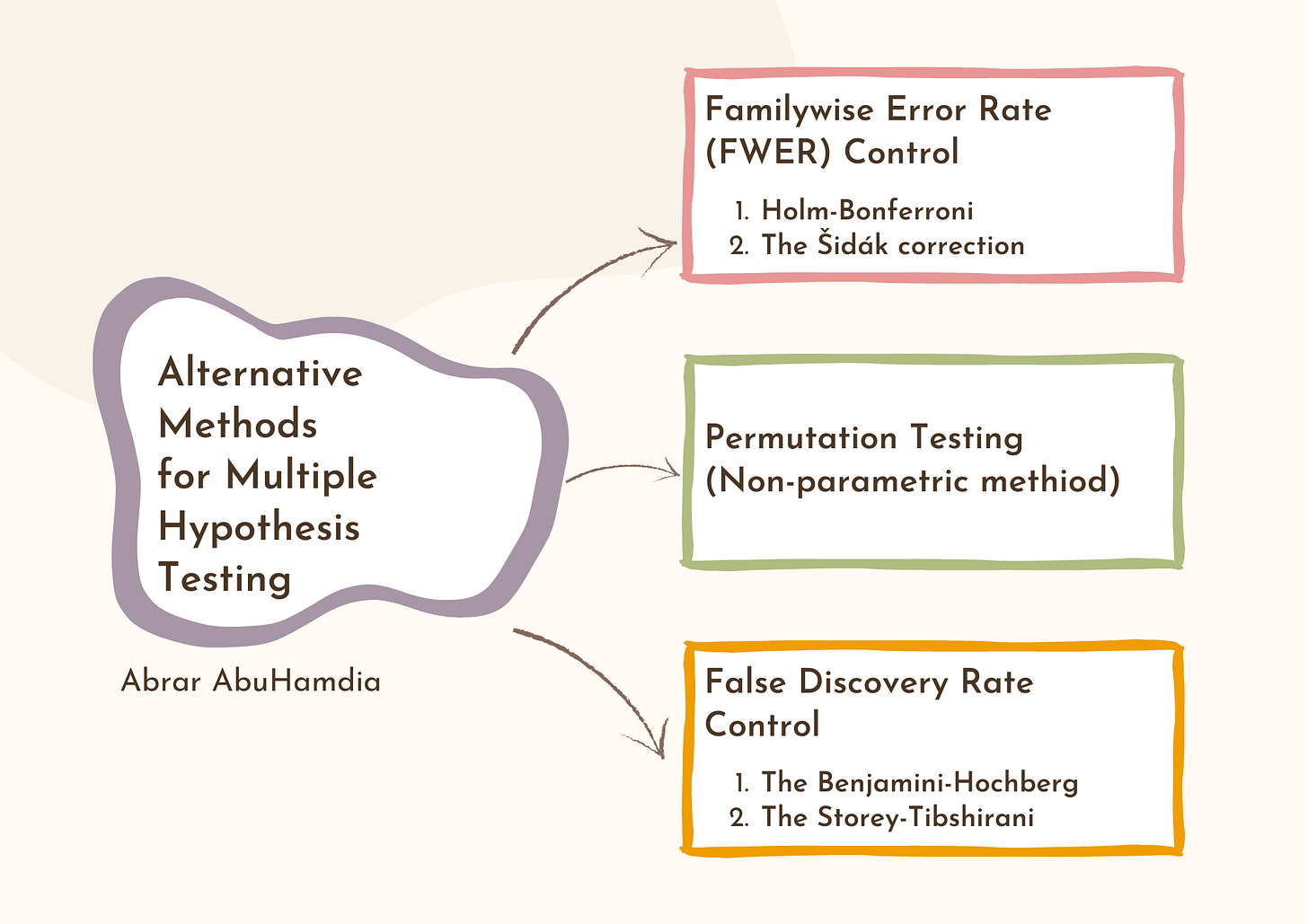Hypothesis testing serves as a guide for groundbreaking discoveries. These discoveries are hidden behind the doors of possibilities. Each test opens a door to possibilities: when you implement multiple hypothesis tests, you open countless doors of possibilities, creating a world where impossible is vanishing, odds align, and the quest for significance becomes an exhilarating pursuit that leads us astray. In other words, you feed a Type I error to loom, threatening your scientific endeavors, and permit false positive results to cast a deceptive glow, enticing you with its illusory glow, concealing the truth, and steering you towards incorrect conclusions.
Fear not for you is not alone in this quest.
Alternative methods for multiple-hypothesis testing have emerged as beacons for guidance, illuminating the path to accurate scientific conclusions. Let us explore these methods together and witness their power:
1. The family wise error rate (FWER) acts as a guardian, shielding you from the clutches of false positives and allowing you to draw sound conclusions with confidence by controlling for type 1 error.
2. False Discovery Rate (FDR) control is similar to a sentinel that prevents the passage of unauthorized aliens while maintaining the integrity of passageways. It inspires power and error control dance hand in hand, controlling type 1 errors while maintaining the study power.
3. Permutation Testing swirls data like a whirlwind, rearranging them with each permutation, each of which reveals the probabilities of observing remarkable effect sizes or even greater. In other words, it calculates the likelihood of a result having an effect size.
In the end, Embrace the joy of unraveling the mysteries of the universe, armed with the potent methods that guide you towards truth. Revolutionize the way you interpret research outcomes and pave the way for future scientific marvels.
Thank you for taking the time to read my essay. If you found this essay insightful, please share it with your community.
Subscribe me to receive fresh content about scientific research.



